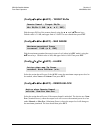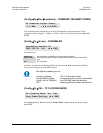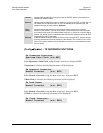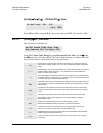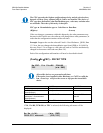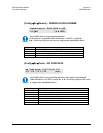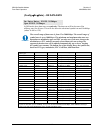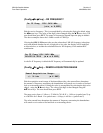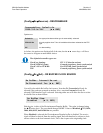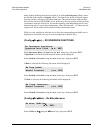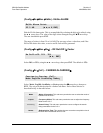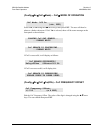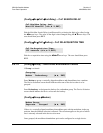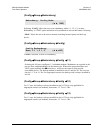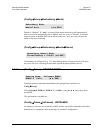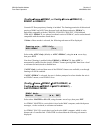
CDM-Qx Satellite Modem Revision 5
Front Panel Operation MN/CDMQx.IOM
5–29
(ConfigRxDescram) - DESCRAMBLER
Options are:
Default-On
the appropriate descrambler type is automatically selected.
IESS-315-On
this only applies when Turbo is installed and has been selected as the FEC
type.
Off
no descrambling.
As before, the options are displayed all of the time, but the ◄ ► arrow keys will force
the cursor to skip past an unavailable choice.
The default descrambler types are:
Viterbi, no framing: ITU V.35 (Intelsat variant)
Viterbi, EDMAC frame: Comtech proprietary, frame synchronized
Viterbi + RS or TCM/RS: Per IESS-308, frame synchronized
TPC: Comtech proprietary, frame synchronized
(ConfigRxBuf) – RX BUFFER CLOCK SOURCE
User will select which Rx buffer clock source. Note that Tx-Terrestrial will only be
selected if the cards are grouped as modem. Also, note that External will only be
selected if QDI interface type is selected. Selecting either one will allow the user to select
th e buffer size as shown below:
Edit the size, in bits, of the Plesiochronous/Doppler Buffer. The value is changed using
the S T arrow keys. The user should then press ENT. Values of Disabled, ± 512, 1024,
2048, 4096, 8192, and 16384 bits are possible.
When Disabled is selected, the Plesiochronous/Doppler buffer is disabled. The receive
clock will then be derived from the satellite signal, and will therefore be subject to clock
offsets relative to the local transmit clock, This is due in part to the originating clock
Descrambling: Default
-
O
n
IESS-315-On Off (◄ ► ENT)
Rx Buffer Size:
Disabled (▲ ▼, ENT)
IMPORTANT
Rx Buffer: Internal Rx
-
S
at
Tx-Terrestrial Ins (◄ ►, ENT)



